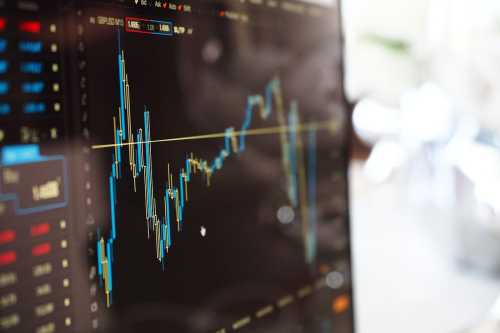
WASHINGTON — The nation’s economy expanded at a robust 4.9% annual rate from July through September as Americans defied higher prices, rising interest rates and widespread forecasts of a recession to spend at a brisk pace.
The Commerce Department said the economy expanded last quarter at the fastest pace in nearly two years — and more than twice the 2.1% annual rate of the previous quarter.
Thursday’s report on the nation’s gross domestic product — the economy’s total output of goods and services — showed that consumers drove the acceleration, ramping up their spending on everything from cars to restaurant meals. Even though the painful inflation of the past two years has soured many people’s view of the economy, millions have remained willing to splurge on vacations, concert tickets and sports events.
“This is just a very resilient economy that continues to take hit after hit and keep on,” said Joseph Brusuelas, chief economist at RSM, a tax and consulting firm.
Yet the robust growth may prove to be a high-water mark for the economy before a steady slowdown begins in the current October-December quarter and extends into 2024. The breakneck pace is expected to ease as higher long-term borrowing rates, on top of the Federal Reserve’s short-term rate hikes, cool spending by businesses and consumers. Economists have projected that growth could slow to an annual pace of just 1.5% in the final three months of this year.
One sign of the coming slowdown, Brusuelas said, was a 3.8% drop in business spending on new machinery and other equipment last quarter. That pullback likely reflected the higher cost of borrowing to finance such purchases.
And other key drivers of growth in the July-September period could prove short-lived. They include a surge in stockpiled goods that businesses added to their warehouses and store shelves. The buildup in these inventories accounted for about a quarter of last quarter's growth from July to September and isn't considered likely to be repeated.
An increase in house and apartment construction also boosted growth in the third quarter. But as mortgage rates near 8% and sales of existing homes continue to fall, analysts expect housing to weaken the overall economy in the coming months.
“We can already see the drag forming in the final three months of the year,” Brusuelas said.
In addition, consumers are spending more of their savings — a drawdown that could eventually weigh on growth. Many, particularly lower- and middle-income Americans, are stepping up their use of credit cards. These cards now carry much higher rates after the Fed boosted its benchmark interest rate to about 5.4%, its highest level in 22 years. Americans, as a whole, saved just 3.8% of their income last quarter, down from 5.2% in the April-June quarter and notably below pre-pandemic levels.
Several Fed officials acknowledged in speeches last week that the most recent economic data showed growth picking up by more than they had expected. Yet most of the policymakers signaled that they will likely keep their key rate, which affects many consumer and business loans, unchanged when they meet next week.
Even consumers who are closely watching their budgets, though, are still willing to treat themselves in many cases. Among them is Danielle Gagliano, who was at Kohl’s department store in Ramsey, New Jersey, last week with her 2-year-old son, returning an item and picking up three pairs of pants for her 10-year-old daughter.
Gagliano, 35, said she has been doing more of her food shopping at ShopRite and discounter Aldi and less at Acme, which she feels is more expensive. And she’s been looking for more discounts.
Still, Gagliano said she makes room in her budget to go out to dinner with her family a couple times a month.
“I like to support the local restaurants,” she said.
A range of factors have helped fuel consumer spending, which accounts for the bulk of the economy’s growth. Though many Americans are still feeling under pressure from two years of high inflation, average pay has outpaced price increases and enhanced people’s ability to spend.
And inflation is steadily easing, Thursday's report showed. Excluding volatile food and gas prices, core inflation slowed to a 2.4% annual rate in the third quarter, according to the Fed's preferred measure. That is down from 3.7% in the second quarter to the slowest pace in nearly three years.
Smaller price increases likely encouraged some people to spend lavishly on both goods and services last quarter. There were some one-time factors that boosted spending, like blockbuster concert tours by Taylor Swift and Beyonce. Fans spent an average of $1,500 on air fares, hotel rooms, and concert tickets to see Swift's shows, and an average of $1,800 for Beyonce, according to calculations by Sarah Wolfe, U.S. economist at Morgan Stanley.
Americans, as a whole, also began the year on healthy financial footing, according to a report last week from the Fed. The net worth of a typical household jumped 37% from 2019 through 2022. Home prices shot higher, and the stock market rose in the biggest surge on records dating back more than 30 years.
Even so, consumers are likely reining in their spending in the final three months of the year, and the sluggish housing market is dragging on the economy as well. This month, nearly 30 million people began repaying several hundred dollars a month in student loans, which could slow their ability to spend. Those loan repayments had been suspended when the pandemic struck three years ago.
Fed Chair Jerome Powell, in a discussion last week, said he was generally pleased with how the economy was evolving: Inflation has slowed to an annual rate of 3.7% from a four-decade high of 9.1% in June 2022. At the same time, steady growth and hiring have forestalled a recession, which was widely predicted at the end of last year.
If those trends continue, it could allow the Fed to achieve a highly sought-after “soft landing,” in which it would manage to slow inflation to its 2% target without causing a deep recession.
Still, Fed officials were surprised by a strong government report last week on retail sales, which showed that spending at stores and restaurants jumped last month by much more than expected. Powell has since acknowledged that if the economy were to keep growing robustly, the Fed might have to raise rates further. Its benchmark short-term rate is now about 5.4%, a 22-year high.
___
AP Retail Writer Anne D'Innocenzio contributed to this report from New York.
Sourse: abcnews.go.com






